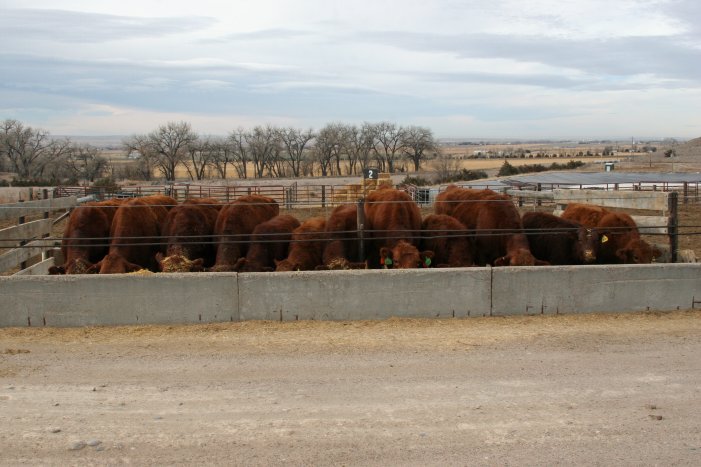
By Karla H. Jenkins, UNL Cow/Calf, Range Management Specialist
Drought continues to plague most of Nebraska. Due to the ongoing drought conditions, residual forage, soil moisture, hay production, and 2013 grass growth continue to be severely limited. In order to reduce grazing pressure and delay pasture turn out as long as possible many producers are considering limit feeding cow/calf pairs in confinement. This can be a viable option but there are several management considerations that need to be addressed.
Confinement refers to removing cows from the opportunity to graze a pasture that needs rest. Some options include a winter feed ground, pivot corners, crop ground, or a feedlot. Cows fed out on a pasture will continue to graze green grass if it is available. Each pair in confinement will need at least 350-400 ft2 of space. Each cow will need about 2 feet of bunk or feeding space while calves will need an additional 1-1½ feet. If at all possible younger cows should be fed separately from mature cows to reduce competition.
Limit feeding refers to providing a limited amount of a nutrient dense feed. In other words the pairs are not allowed ad libitum intake of the feed, but rather, given a lesser amount that will still meet their nutrient requirements. Mixing nutrient dense by-products such as distillers grains, sugar beet pulp, soy hulls, and/or corn gluten feed with low quality roughages or crop residues may be more economical than feeding larger amounts of medium quality hay.
Energy is the key to making a limit fed diet work. The energy density of the diet must be high enough to meet the needs of the cow when intake is cut back. Once a cow calves and begins lactation, her energy needs increase considerably. Additionally, she must rebreed within 83 days of calving to stay on a 365 day production cycle. A cow that only needs 11 Mcal of energy/d during late gestation will need 14-15 Mcal/d at peak lactation. It is also important to remember that nursing calves will eat about 1% of their body weight in forage dry matter. Additional feed may be added for the calves or a creep feeder could be provided for them as well. For assistance with ration balancing and feed amounts producers should contact their local extension office.
Young calves in confinement must be able reach the water tank and the feed source. If water flow is restricted into the tank, cows can drink the tank down far enough that small calves cannot reach the water. Additionally, the tank may need to be banked with dirt to ensure calves can reach it. If the 2013 drought is accompanied by the extreme heat of 2012, confined calves may need a source of shade. Creep feeders work well for this, too.
Producers should consult their local veterinarian for the appropriate vaccination programs for their herds. If health issues arise in confinement herds, those pairs should be isolated from the remainder of the herd. If calves are born in confinement, grouping calves with less than a two week spread on age will help reduce the incidence of scours.
For more UNL Beef information go to http://beef.unl.edu